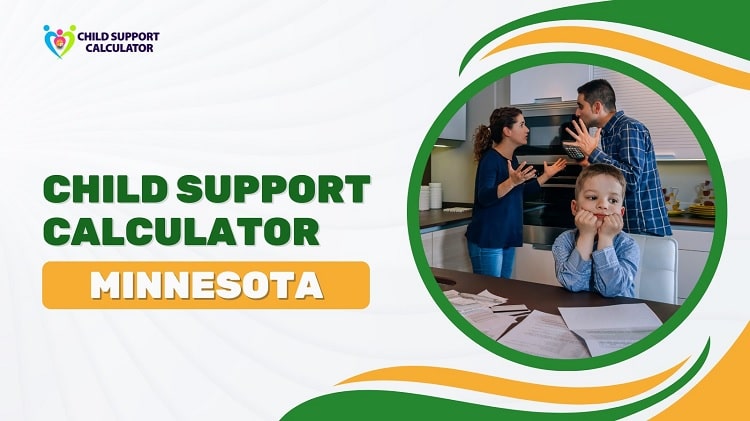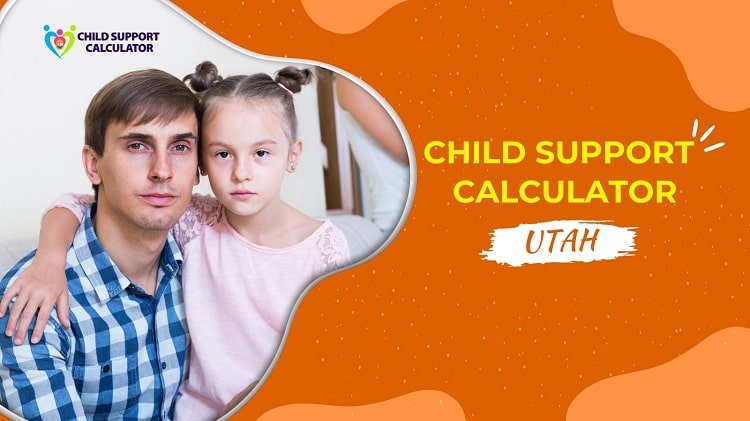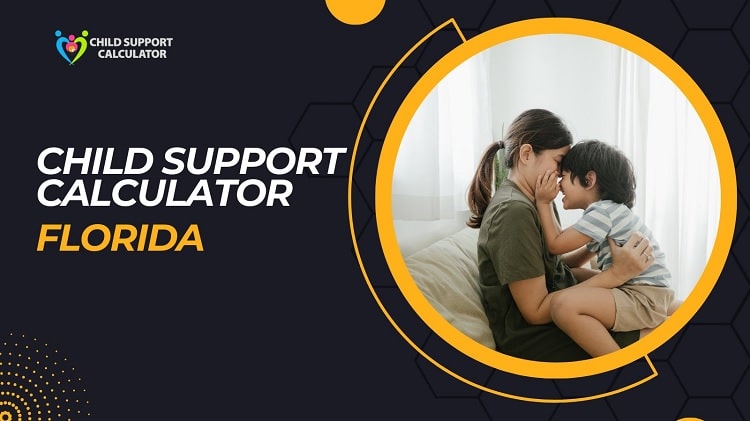Child Support Calculator In Hawaii
Even after a divorce or separation from the child’s other parent, a parent’s financial obligation to provide for their child endures. In Hawaii, both parents are required to support their child(ren) financially. The terms of the custody and visitation agreements have an impact on the calculation of child support.

The “noncustodial parent,” who often spends less than half of the time with the child, is accountable for paying support. The “custodial parent,” on the other hand, supports the child directly and is typically exempt from having to make child support payments to the other parent because they spend the majority of time with the child.
Typically, the number of children involved, the parent’s income, and the kid’s particular requirements all play a role in determining how much child support is given with the help of a child support calculator in Hawaii.
The state’s support calculator can be used to determine your possible obligation in Hawaii. A judge or state agency may choose to modify child support payments based on your particular circumstances and the needs of the kid, even though they will assess the guideline amount.
What is child support in Hawaii?
Even after a divorce or separation from the child’s other parent, Hawaii’s parents are legally required to support their children financially for their well-being. Child support aims to guarantee that kids keep getting the money they need to meet their basic requirements, which include food, clothes, shelter, healthcare, and education.
In Hawaii, the total number of children involved, the combined income of both parents, and any unique requirements or costs associated with the kid are usually taken into account when calculating the appropriate amount of support while using the child support calculator in Hawaii.
To help parents determine their respective financial responsibilities, the state has a child support calculator that helps parents estimate the proper amount of child support.
Child support payments are often made to the “custodial parent,” who has primary physical custody and directly takes care of the child’s needs, by the parent who spends less than half of their time with the child, known as the “noncustodial parent.”
In Hawaii, child support is crucial for ensuring that kids get the money they need, improving their general well-being, and easing any potential financial stress on custodial parents. Child support orders from the court are binding, and disobeying them may have legal repercussions.
How much is child support in Hawaii?
Hawaii’s child support regulations specify a precise formula that must be used to determine child support payments. The following are the main criteria used to calculate child support:
- The total number of kids is: The support requirement increases with the number of children involved.
- Both Parents’ Income: The custodial and noncustodial parents’ gross incomes are considered. Paychecks, incentives, rental income, and other kinds of revenue are included in this. Taxes and required retirement contributions are deducted.
- Costs of Childcare and Medical Care: The estimate considers the cost of child care and the child’s health insurance costs.
- Special needs of the kid, such as those related to education or medical costs, may be taken into account.
- Custody Arrangement: The kind of custody arrangement—sole, joint, or shared custody—affects how much child support will be paid.
Hawaii offers an online calculator for the Child Support Guidelines to calculate child support obligations based on these considerations. Remember that each case’s unique circumstances may necessitate a different level of child support. If a judge or state agency decides it’s necessary to protect the child’s best interests, they may also modify the amount that was determined.
The state’s online calculator or speaking with a family law expert can help parents receive a more precise estimate of their child support responsibilities in Hawaii. It’s crucial to understand that child support calculations can be complicated.
How to Calculate Child Support In Hawaii?
The amount of child support that a noncustodial parent is required by law to pay to the custodial parent is determined by a series of criteria and computations known as Hawaii’s Child Support Guidelines. Even after parents have separated or divorced, these rules make sure that kids get the money they need to meet their basic requirements, such as food, clothes, shelter, education, and healthcare.
The following are some essential components of Hawaii’s child support laws:
Calculating income: The parents’ combined income serves as the basis for calculating child support in Hawaii. The standards account for each parent’s gross income. In addition to wages, bonuses, commissions, rental income, self-employment income, and other forms of income are all included in gross income. To calculate the adjusted gross income, a number of deductions are removed from the gross income, including federal, state, and obligatory retirement payments.
Total Adjusted Gross Income (GAGI): The combined adjusted gross income for the family is determined by adding the adjusted gross incomes of both parents. The obligation to pay child support is calculated using this total income.
The fundamental child support obligation: Hawaii uses an income-sharing system, which means that the amount of child support due is determined by the combined income of both parents.
The state offers a table that compares the total adjusted gross income with the minimal amount of child support required for a given number of kids. This table aids in calculating the base amount of child support required to cover the kid’s essential needs.
The adjustment for shared parenting: Hawaii’s rules provide a shared parenting adjustment if parents have joint physical custody of the child and spend a lot of time with them. The child support obligation may be decreased as a result of this adjustment, which acknowledges that both parents are making direct contributions to the kid’s costs.
Additional Charges: The rules take other costs associated with the kid, like healthcare and childcare fees, into account in addition to the fundamental child support requirement. These costs are included in the total amount of support due and may be covered in part by the noncustodial parent.
Deviation from Recommendations: The rules admit that each situation may be different, even while they offer a structure for determining child support. If a judge or state agency decides that going against the rules is beneficial for the child, they have the authority to do so. Deviations may happen due to things like a child’s special needs, educational costs, or other things that call for extra help.
Modifications: If there is a major change in circumstances, such as a considerable change in either parent’s income or a change in the requirements of the child, support orders may be changed in Hawaii. If a modification is required, proceeding according to the law is crucial.
Enforcement: Child support orders are legally binding, and failure to comply can lead to enforcement proceedings such as license suspension, tax intercepts, and pay garnishment.
The purpose of Hawaii’s Child Support Guidelines is to guarantee uniformity and fairness in child support determinations. They offer a methodical and predictable framework for determining child support while considering both parents’ financial situations.
To guarantee correct calculations and compliance with child support obligations, it is crucial for parents to grasp these standards, consult legal advice, or use the state’s online child support guidelines calculator. In order to ensure that their children receive the assistance they require for their well-being, parents should also cooperate and communicate in their children’s best interests.
Challenging the Amount of Support In Hawaii
The guidelines’ standard child support amount may be deemed unfair for the child or the involved parent in some cases. A parent can ask a court or state agency for an adjustment to the support amount, taking into account unusual circumstances, before a child support order is established.
Each family’s specific circumstances must be considered when deciding whether to depart from the recommended amount. The standard guidelines may need to be deviated from for a number of reasons, including when the paying parent’s net income is being excessively depleted by child support payments, when there are additional dependent children living in the household who need financial support, or when either the paying parent or the child has extraordinary medical or physical needs.
A careful analysis of the unique facts surrounding the case will determine whether or not a variance from the guideline child support amount is justified. When such unique circumstances arise, it is crucial to consult with the proper legal channels or state organizations to investigate the potential of modifying child support payments. This ensures that the child’s best interests are considered while considering the particular dynamics and difficulties of each household.
Collecting Child Support in Hawaii
The noncustodial parent is required by law to make full and on-time payments on a regular basis, usually monthly, once a child support order has been set. The payment of the child support obligation is often given priority by judges over the precise payment method.
In certain cases, the court can compel the payment of child support through wage garnishment, in which case the custodial parent receives the money automatically withheld from the noncustodial parent’s income. In addition, there are many ways for the noncustodial parent to pay child support directly, including cash, checks, bank transfers, direct deposits, or by using practical payment applications like Zelle or Venmo.
Instead of the precise method of payment, the court’s main concern is that child support is consistently paid in whole and on time. To guarantee that the kid’s financial requirements are covered, both parents should abide by the conditions of the child support order. Any disagreements or issues regarding payment methods should be resolved through the right legal procedures or by mutual agreement between the parents.
Modifying the Amount of Support in Hawaii
When significant changes in circumstances warrant an adjustment to the current child support order, Hawaii allows for the modification of the amount of child support. The procedure for changing child support is as follows:
Significant Change in the Situation: You must show that there has been a significant and material change in circumstances after the initial child support order was set in order to ask for a modification. Modifications are frequently required when either a parent’s income substantially changes, the child’s requirements change, or the custody arrangement changes.
Ask for a review: To start a review of the child support order, the first step is to get in touch with the court or the Hawaii Child Support Enforcement Agency (CSEA). You can ask for this review if you think that a change is required owing to new information.
Collect the following supporting evidence: You must offer proof of the altered circumstances in order to validate your request for a revision. This could consist of recent pay stubs, tax returns, medical records, or proof of alterations made to the child’s living situation.
Mediation: Parents in some situations could decide to address the modification through mediation when both parties collaborate to understand the revised child support amount. A method that is less combative and more collaborative is mediation.
Submit a Motion to the Court: It may be necessary to submit a move with the court to ask for a modification if an agreement cannot be reached through mediation or negotiation. This starts a legal procedure where a judge will review the data and decide based on the child’s best interests and the pertinent legal guidelines.
Attend a Court Hearing: Be ready to go to a hearing in order to argue your case for the modification. The proposed modification to child support will allow both parents to present arguments and supporting data.
Receive a New Order: Should the judge find that a modification is necessary, a new child support order will be issued, outlining the revised amount of child support due as well as any other pertinent provisions.
The modification of child support orders in Hawaii is possible where there is a justifiable necessity, but it is not required. They need a court case and the appropriate paperwork to back up the request. During this process, speaking with a family law attorney can be quite helpful since they can walk you through the legal procedures and assist you in making a strong case for adjustment.
Conclusion
Finally, the child support calculator in Hawaii offers a methodical and fair way to calculate child support responsibilities. It ensures that child support is equitable and in the kid’s best interests by taking into account things like parental income, custody arrangements, and the child’s needs. It’s important to understand that, in extreme cases, it is possible to stray from the rules.
To navigate the child support calculation process, parents should be communicative with one another and, if required, seek legal counsel. The ultimate objective is to make sure that children, even in the wake of parental separation or divorce, have the financial support they need to grow and lead satisfying lives.
Faqs
How is child support determined in Hawaii?
Hawaii bases child support on how many overnight visits there were. Hawaii bases the calculation of shared custody timeshare percentages on overnights or the location where the children sleep. The Hawaii child support formula includes nightly totals in addition to income as a crucial component.
What is child support in Hawaii?
In Hawaii, both parents are responsible for providing for their child(ren). The amount of support each parent must contribute will vary depending on visitation and custody agreements. In particular, the “noncustodial parent”—the parent who sees the child less than half the time—actually makes support payments.
Can child support be waived in Hawaii?
In accordance with Hawaii law, the parent who does not have primary physical custody of the children is obligated to pay child support to the primary custodial parent. The custodial parent is not allowed to refuse to pay child support because it is a legal requirement
In Hawaii, how frequently can child support be changed?
If either parent’s circumstances have changed since the order was first made, or if it has been at least three years since the order was last examined for a modification, the order for child support may be adjusted.







